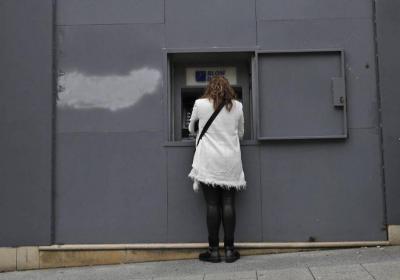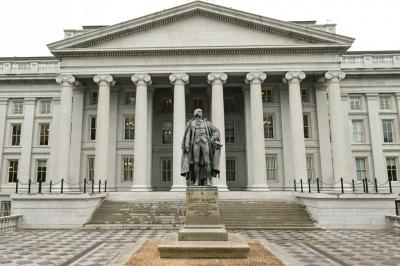Economist Pascal de Lima analyzes the impacts of the surprise dissolution of the National Assembly and the ECB's interest rate cut on the already fragile French economy.
The ECB’s interest rate cut was immediately overshadowed by the surprise dissolution of the National Assembly. French borrowing rates surged, and the spread with Germany increased. Is this sustainable? A temporary setback due to political uncertainty?
Here, the political aspect seems crucial: the dissolution of the National Assembly creates major political uncertainty, and financial markets generally dislike political uncertainty for a simple reason—it affects various risks. There is the budgetary risk concerning future budgetary trajectories, economic risk due to potential increased protectionism, and fundamentally, the future of the EU and the Euro. This can be seen as a risk aversion pushing investors to sell French debt, demanding a higher risk premium, hence the increase in rates. Consequently, the spread with “safe haven Germany” increases mechanically. The sustainability of this situation depends on the duration of the crisis. If it resolves quickly with the formation of a stable government, the spread with Germany may return to its previous level, assuming that central bank decisions and the economic situation, particularly France's budgetary trajectory, remain stable and do not deteriorate.
The ECB's key interest rate has been set at 3.75%. However, its president, Christine Lagarde, considers the fight to control inflation to be on the right track, but not yet over. Does this close the door to future rate cuts?
This statement suggests a certain caution regarding potential future cuts. It seems the ECB is in an observation phase, seeking more stable, lasting control over inflation, as if it is not entirely convinced yet. This is understandable, given the recent trends in food inflation, which call for caution. Hence, there is a state of watchful waiting.
Why did the ECB’s announcement of its first rate cut in five years lead to a slight increase in the ten-year German bond yields, which are a reference, to 2.56%?
Investors might interpret this rate cut as a signal that the ECB is less concerned about future inflation, despite strong contradictions, raising credibility risks for the ECB. In other words, they might anticipate exactly the opposite: an increase in inflation. To compensate for the increased future inflation risk, German bond yields rise. Additionally, the rate cut could be seen as a measure to support economic activity, which might be showing latent signs of slowing. Investors might be convinced that this slowdown is real and demand a risk premium on Germany, which was in recession last year. Lastly, a slight speculative movement in the very short term cannot be ruled out, but this seems unlikely for Germany given its credit rating level.
Is this ECB rate cut still good news for consumer credit rates and the deeply troubled real estate market in France?
A decrease in the ECB's key interest rates generally leads to a drop in short-term interest rates, which can translate to lower borrowing costs for borrowers. This encourages household spending. By making credit cheaper, the ECB aims to stimulate overall demand in the economy, and consumers may be inclined to finance major purchases, such as cars or home renovations, which can boost economic growth. A reduction in the key interest rate can also lead to lower mortgage rates, making credit more accessible and encouraging home purchases, thus stimulating a struggling real estate market. Financial accessibility for many individuals can improve as loan payments decrease, potentially stabilizing the housing market by increasing demand for housing, especially in the current moment.
However, as mentioned, the transmission of key interest rate cuts to consumers can take time, and the impact can vary depending on banks' policies and specific market conditions. Consumer confidence also needs to improve, and we must stay focused on fighting inflation today. If rates drop, inflation, which is struggling to stabilize at low levels, could surge again.
Household growth remains the main driver of French growth. Jérome Fourquet claims that our "stato-consumerist" model is running out of steam. What do you think?
It's interesting; we also see this in countries like Greece and Portugal, which are doing better today than France with budget surpluses and have moved away from this model. First, the stato-consumerist model assumes that the state has a central role to play in the economy, intervening in sectors such as health, education, social services, and infrastructure to protect citizens. Consumption is a key driver, often more than 50% of GDP is attributable to this area in public accounting. Public subsidies, social assistance, and tax incentives contribute to this. However, activity has become increasingly globalized, creating wealth leaks and a lack of clarity in the efficiency of public spending. This is reminiscent of the high levels of debt and deficits in France, which necessitate rethinking the efficiency of public spending without questioning the model, just rationalizing and regulating it (intelligent protectionism, calculating causalities in the efficiency of public spending).
On the other hand, more seriously, the feeling that the state is truly and especially totally ineffective—for example, in boosting growth through consumption, redistributing wealth, addressing inequalities, income, and wealth gaps, and the idea that it is better to be a financier than a good family man, etc.—is very threatening to this model as it carries significant discredit. Regarding consumption, the stagnation of wages, unemployment, and the rising cost of living reduce households' capacity and willingness to spend, which suggests that this model is running out of steam.
Today, the reforms being carried out here and there show the end of this model: the importance of digital and ecological transitions related to the jobs of tomorrow. We are developing another economic policy based on the modernization of public services and policies that favor innovation and entrepreneurship, diversifying growth drivers, and often shifting abruptly, as seen today in Greece, towards a supply-side economy with the development of private investment, exports, R&D, productivity improvement, and in the context of a supply-side economy based on the development of economic and digital transitions. For France, the economic future could be strengthened by a transition to a greener and more digital economy. Investments in sustainable technologies and digital infrastructure can stimulate growth while addressing environmental challenges. We are moving away from the traditional stato-consumerist model while remaining in a mix of economic policies.
Without massive reindustrialization and structuring consumption, is France doomed to stagnant growth or to becoming a service economy?
Yes, certainly. We need to regain our independence in value chains, whether industrial, food, or energy, whenever possible. Otherwise, we are destined to become a giant Ibiza in the long run, where perhaps all we’ll have left is the Eiffel Tower to sell. We must regain our independence, diversify our economy—or at least re-diversify it, as it was before—create serious jobs without deceiving the youth. This means not making them believe in an employment Eldorado through the development of "slasherism," which is nothing more than technological precarity in future professions. Let's not forget that the reindustrialization of France has major impacts: it boosts growth, makes the economy less vulnerable to external and demand shocks, reduces regional and social inequalities, and can be a formidable booster for digital and ecological transition.
The ECB fears a resurgence of inflation. Price increases reached 2.6% in the Eurozone in May. Should the European Central Bank change its statutory 2% inflation target?
In a way, yes: maintaining the 2% target is a central pillar of monetary policy and an economically relevant guidepost. I believe it contributes to more stable inflation. It also makes monetary policy more credible for consumers, businesses, financial markets, and for the ECB itself in its own institutional objectives. Otherwise, why not 4% in 10 years? Once we relax this target...
Now, I understand other arguments: Extraordinary situations such as the COVID pandemic and the war in Ukraine might require a more flexible approach to better respond to economic shocks, especially if growth is not compromised. We still doubt this due to the low levels of growth even during inflationary periods. One could also argue that by being more flexible and accepting higher inflation, we further limit the risk of deflation, which has equally unfavorable economic consequences.
Please post your comments on:
[email protected]
 Politics
Politics













